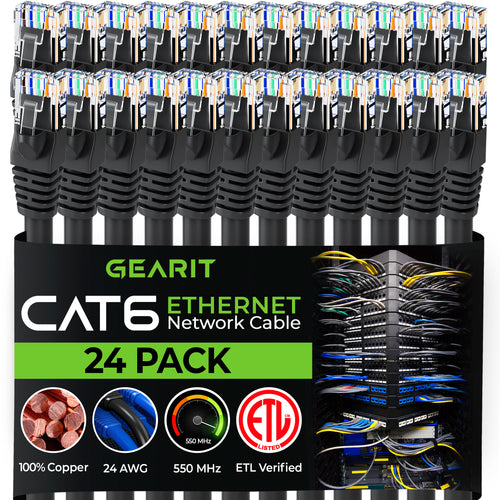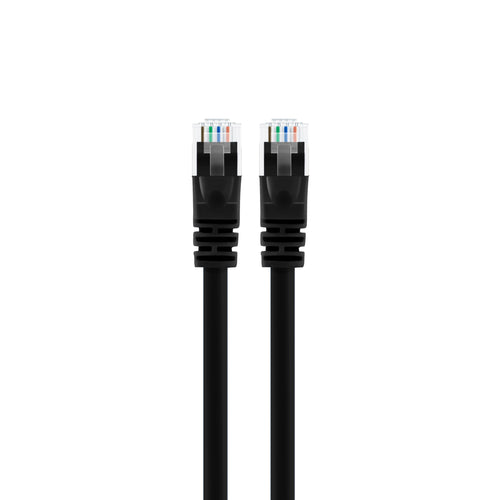
A Cat6 patch cable is commonly used in offices to connect a wide network of computers to a local area network. While these network cables help a business run more smoothly, you can use patch cabling beyond the office to improve your network experience at home.
What Is a Cat6 Patch Cable?
There are currently seven categories of Ethernet cables available: Cat5, Cat5E, Cat6, Cat6A, Cat7, Cat7A, and Cat8. You can use a patch cable as an Ethernet cable. The two main differences between these cables are the lengths and connections. A patch cable is shorter and has connectors on both ends.
Cat6 patch cables can support data transfers up to 1 Gb per second. In an ideal environment, these patch cables can maximally support data transfer rates up to 10 Gb per second. To achieve this potential, the following must occur:
- The network and connected devices must support 10 Gb rates.
- The cable patches are correctly installed with high-quality connectors.
- The local network must be free of signal interference.
Cat6 patch cables have thicker materials, making them more resistant to damage and signal interference. To meet the performance standards set by the Telecommunications Industry Association, a Cat6 patch cable must pass rigorous testing.
What Are the Uses of Cat6 Cabling?
There are many ways to use a Cat6 patch cable to make your home more tech-savvy. Patch cables commonly connect the following to a router or switch:
- Computer systems
- Gaming consoles
- Smart TVs and Blu-ray players
- Home security and automation systems
- Wireless access hubs and network-attached storage devices
With both Cat6 patch cables and outdoor Ethernet cables, you can create an outdoor entertainment center. Install a smart TV on your patio wall and watch movies or play video games under the stars. You can also use Cat6 patch cabling to beef up your security system by installing extra IP cameras.
How Do I Select the Best Cat6 Patch Cable?
Before purchasing patch cables, you should understand the several types you can find in the market.
Shielded vs. Unshielded
Unshielded Cat6, or UTP Cat6, cables have twisted wires to reduce crosstalk and noise. Shielded Cat6 cables have twisted cable pairs within a mesh or foil shield that reduces electromagnetic interference. Unshielded cables are good for connecting a network device directly to your wall, whereas shielded cables are suitable for inside walls, outdoor use, and high-interference areas.
Fiber Optics vs. Copper
Fiber optic patches or "jumper cables” have fiber optic connectors on each end to connect with telecommunications equipment or optical switches. There are single-mode or multimode fiber patches available.
Cat6 patch cable and Ethernet cable contain copper wiring, which has pliability, corrosion resistance, thermal expansion, and tensile strength. Copper provides greater security and can run network signals over long distances. In fact, cable conductors must be made of pure copper to meet Cat6 specifications.





















































